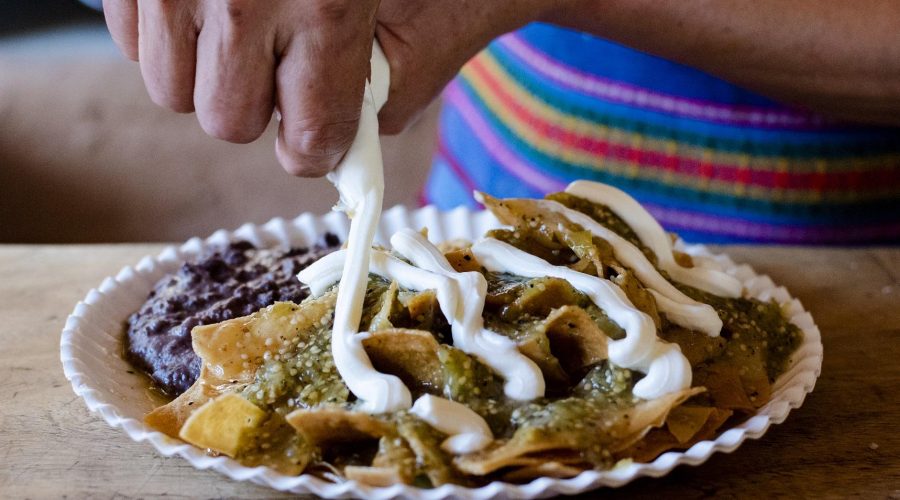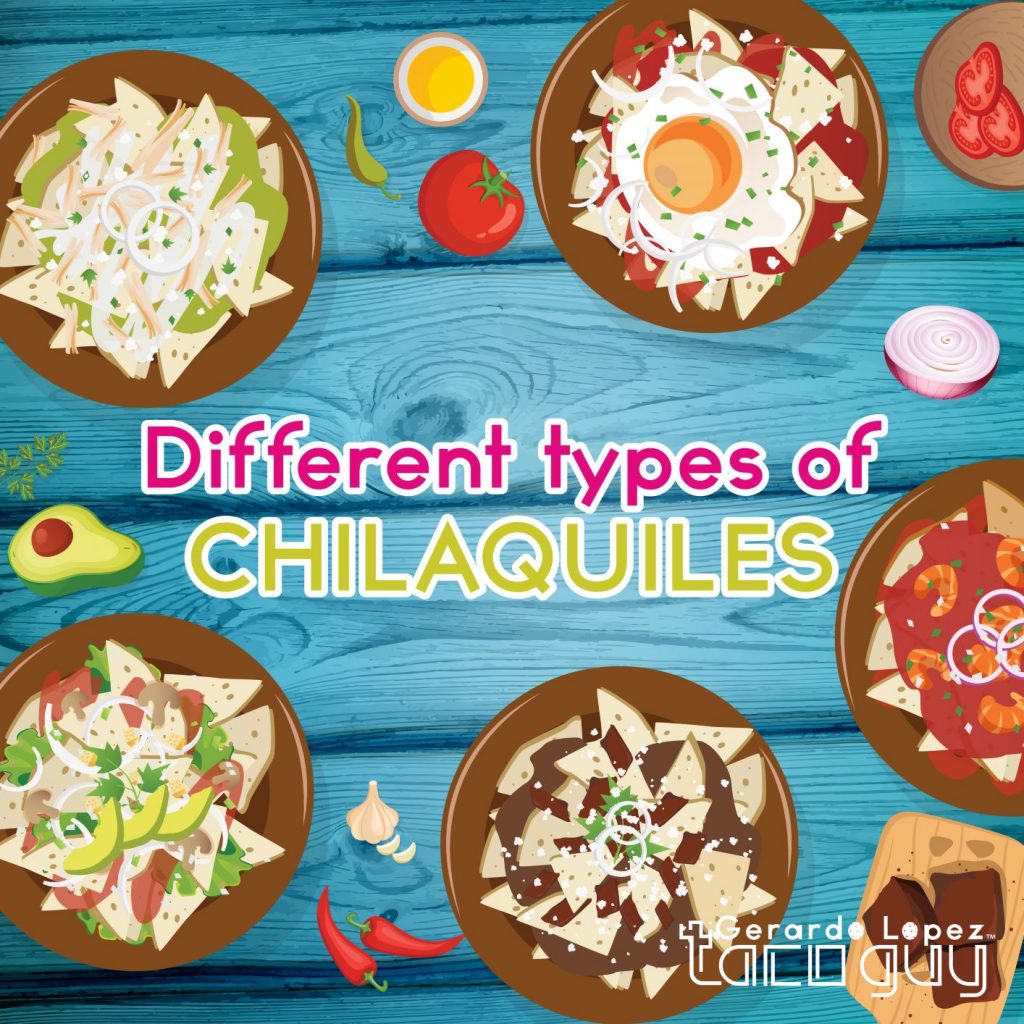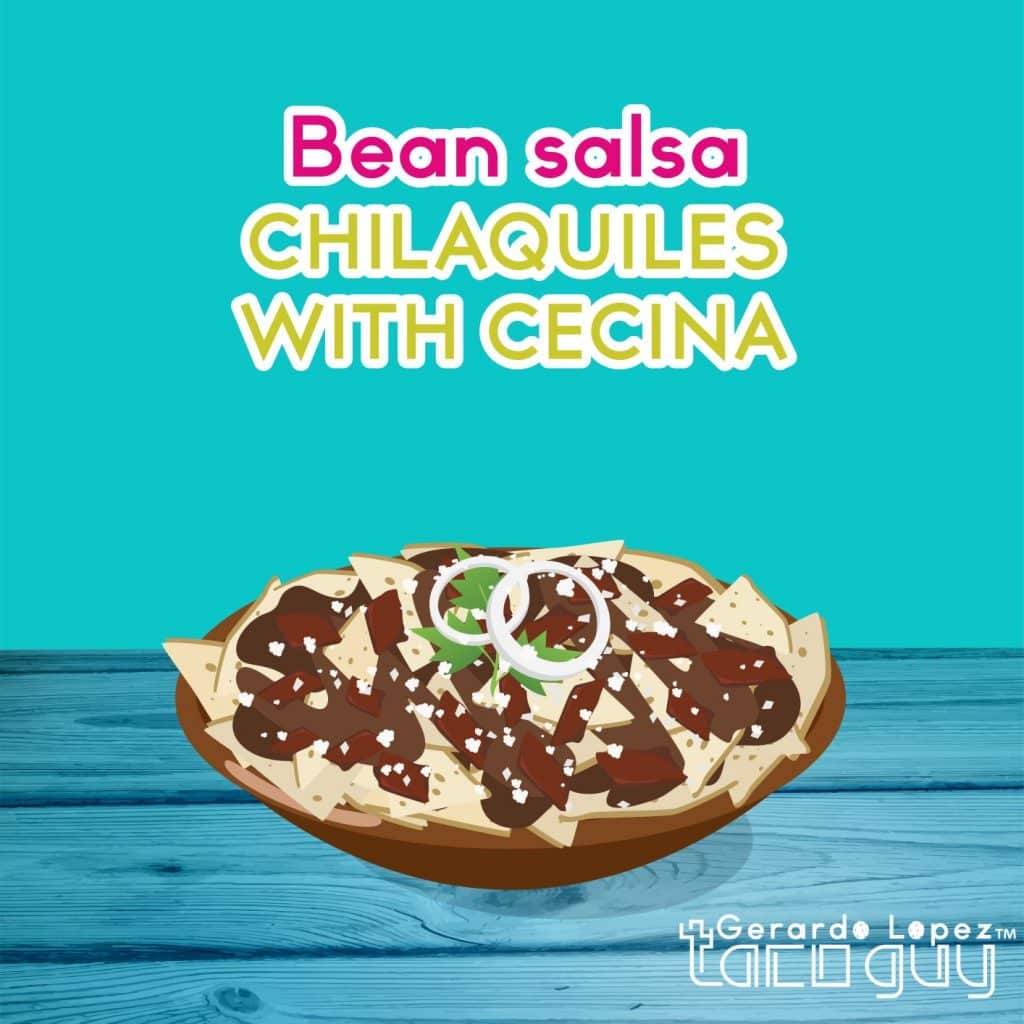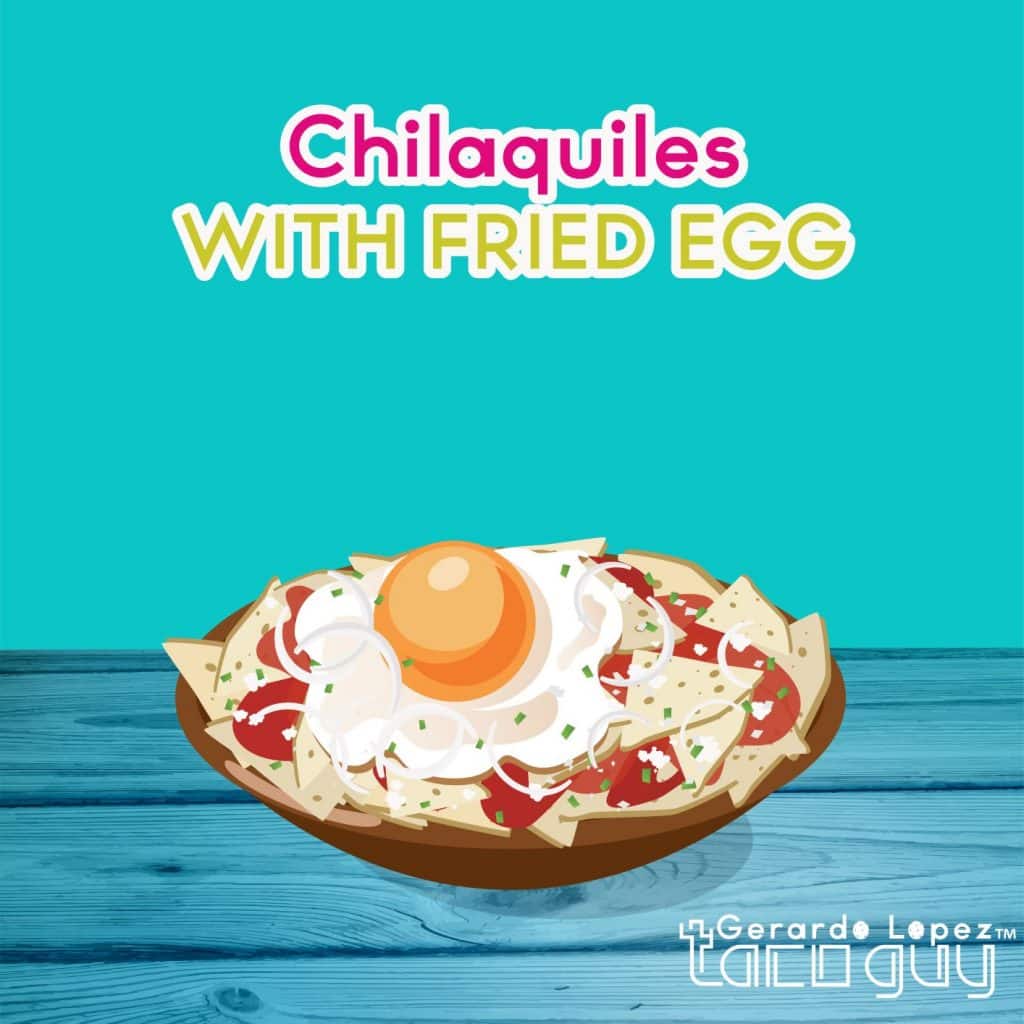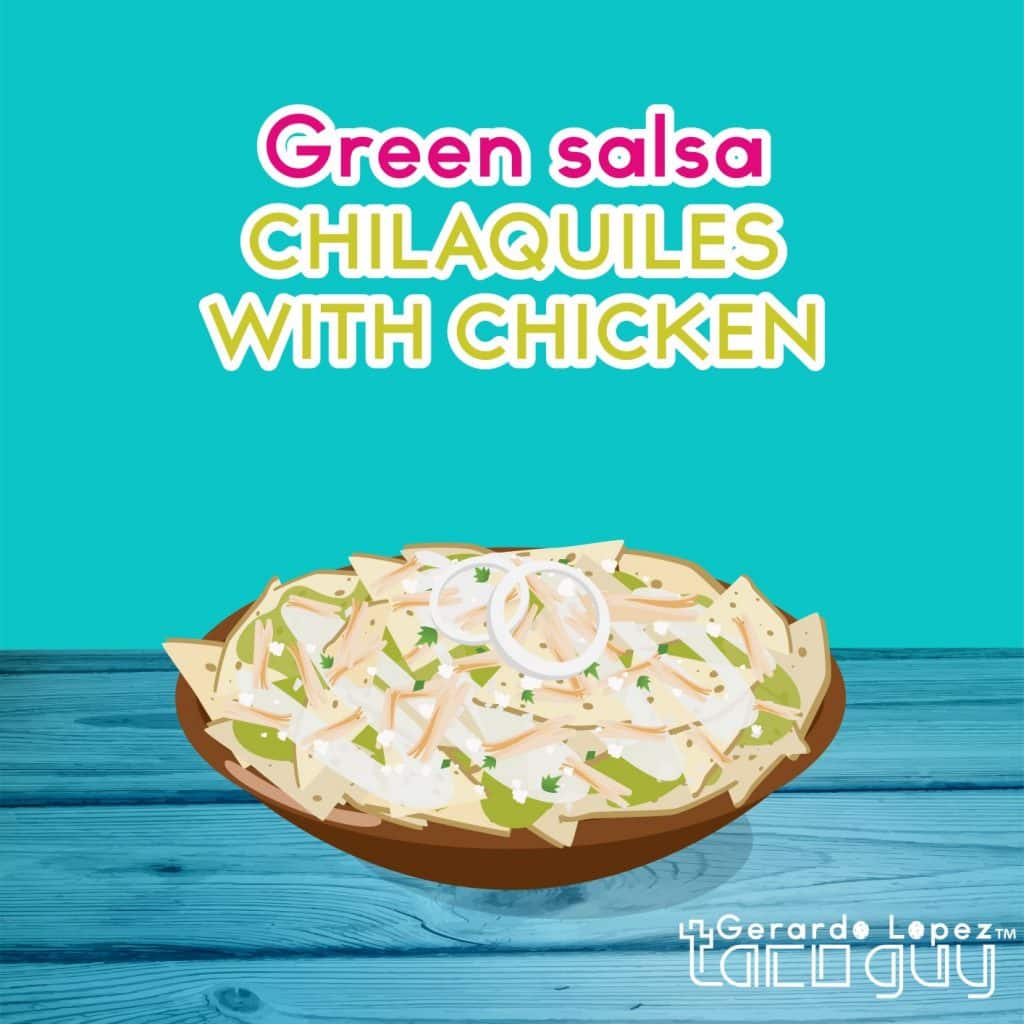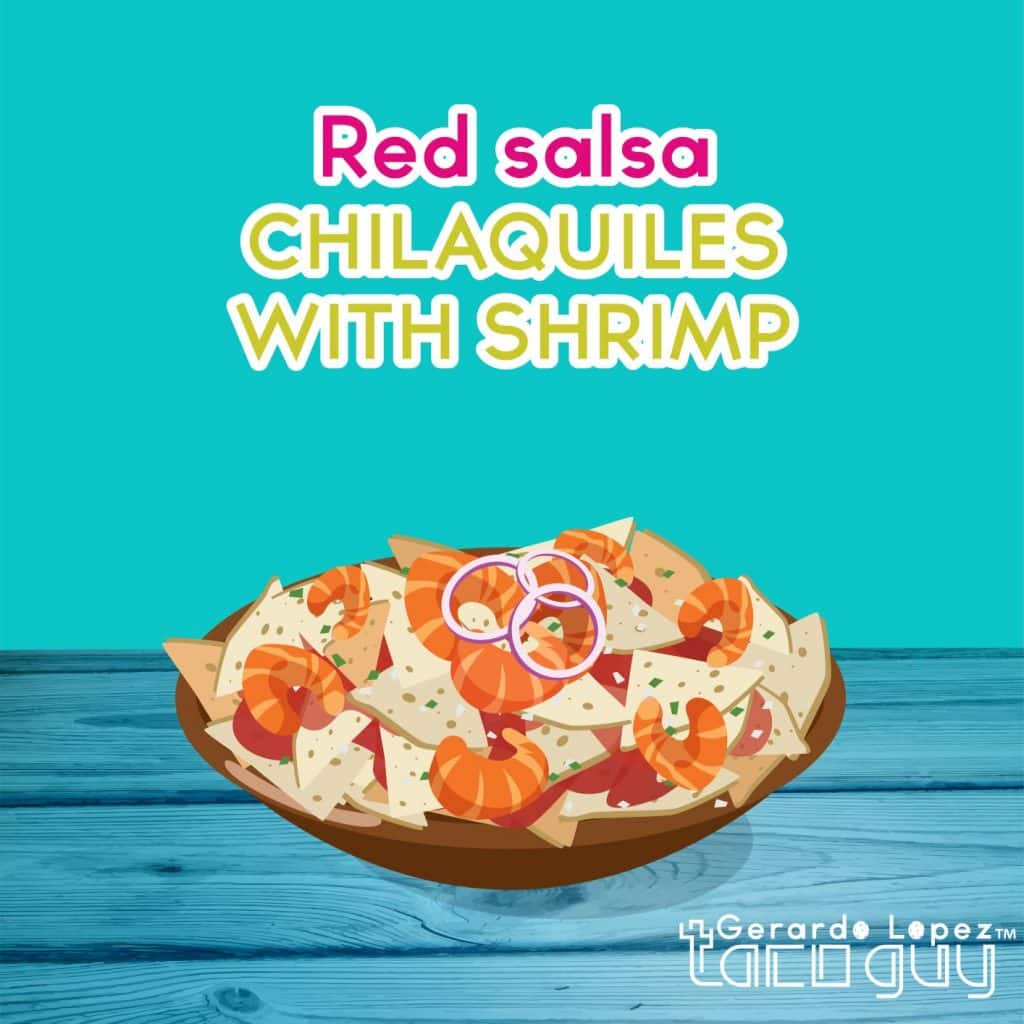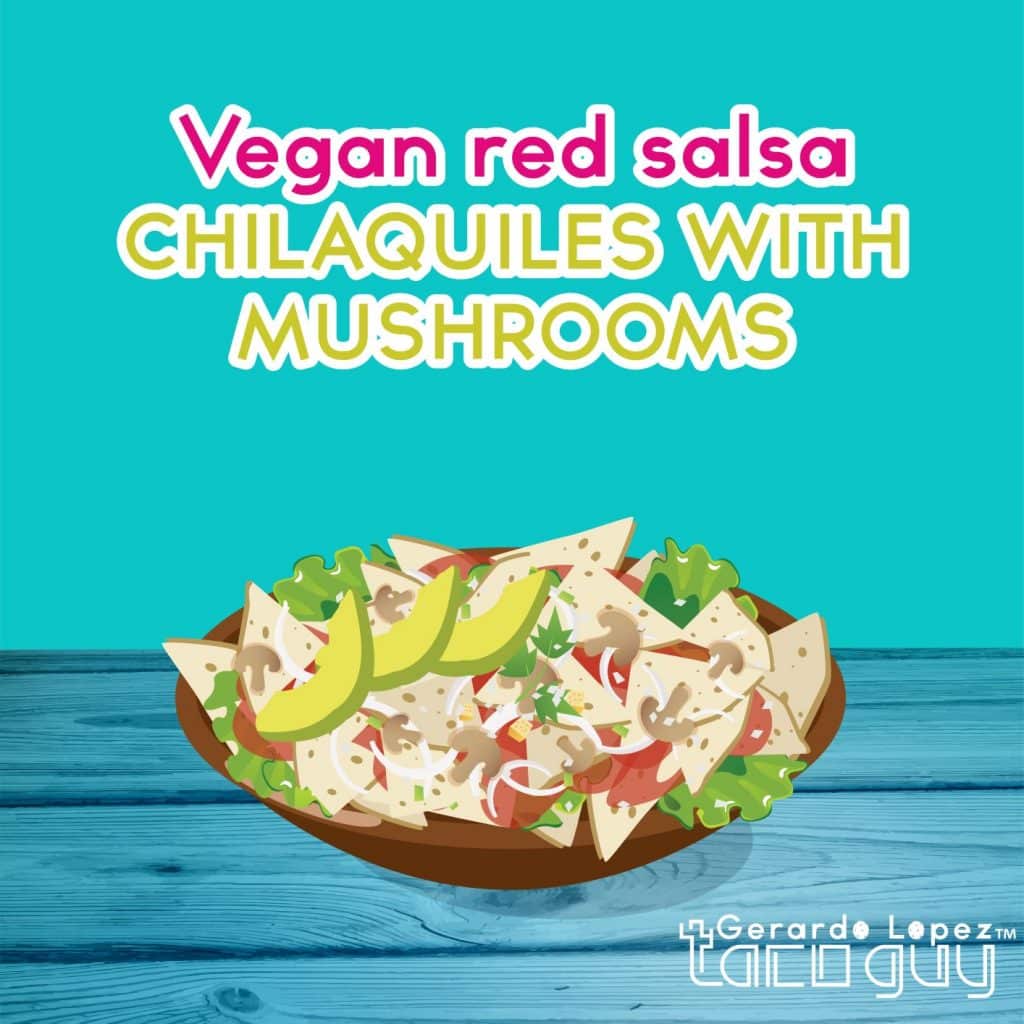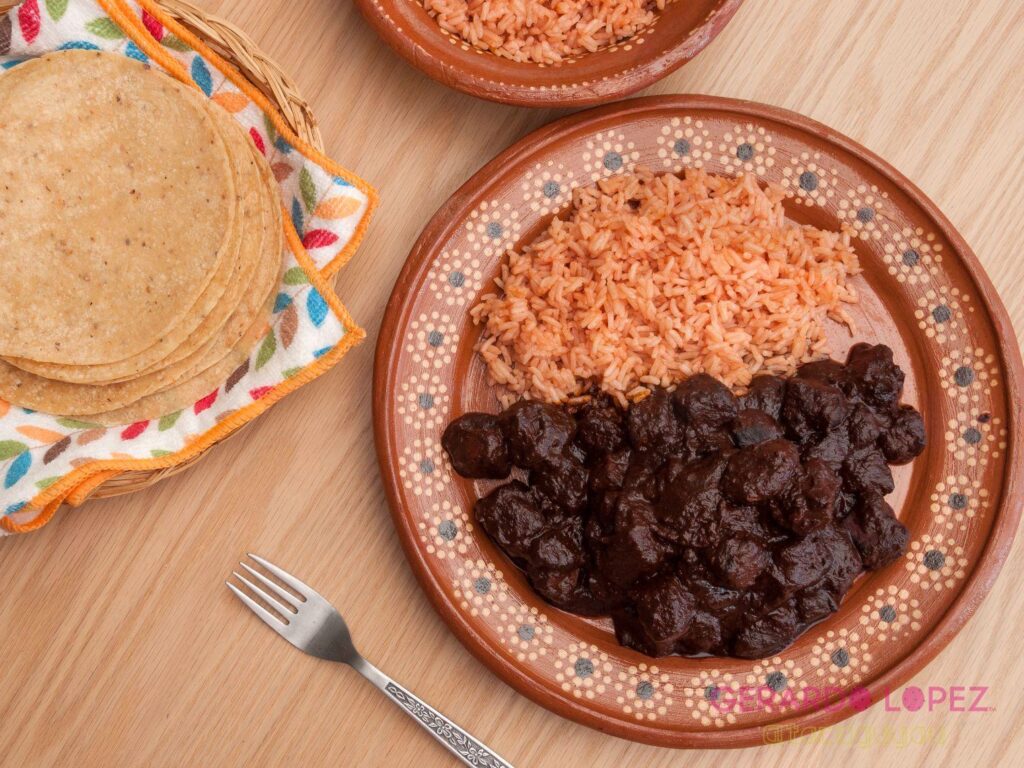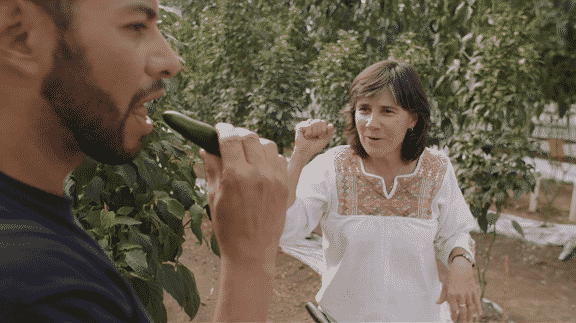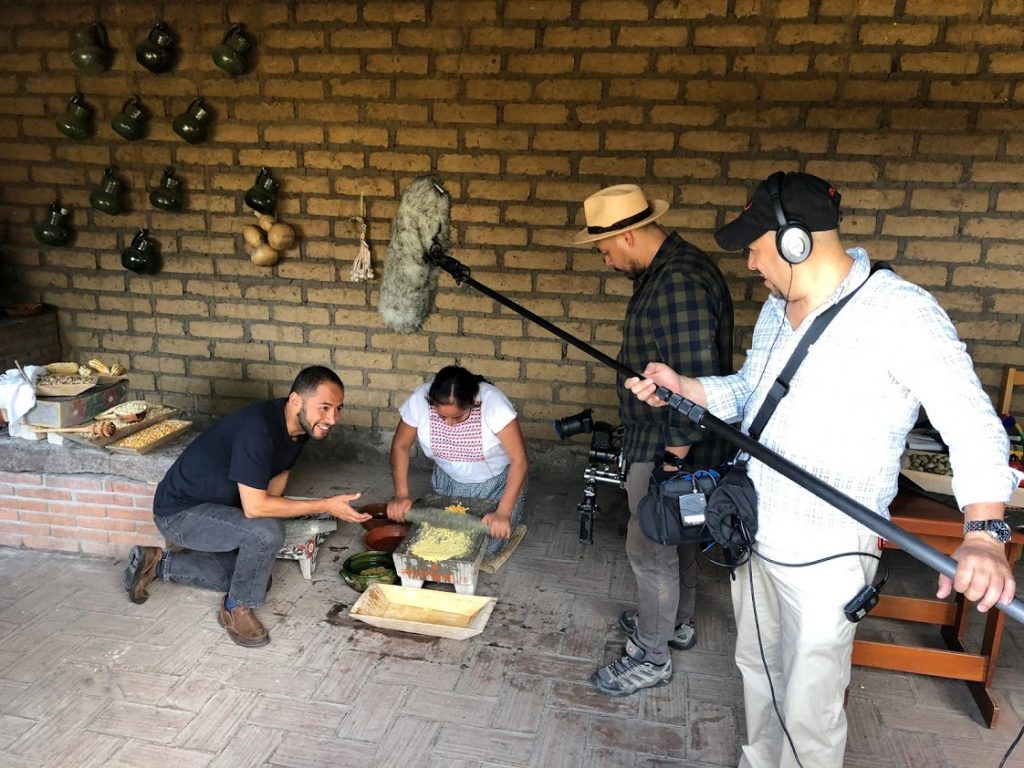Chilaquiles has gained its well-respected reputation as one of the most famous breakfast dishes in any city worldwide that has Mexican restaurants. To Mexicans, Chilaquiles are the favourite choice of breakfast. The love of Chilaquiles goes all the way back to school days, when having them for breakfast before going to school. Or when craving a tasty treat to cure a self-inflicted hangover after a big night out in town. They are one of my favourites! Chilaquiles come in with different colours, different toppings, and different preparation methods, all depends on where in Mexico you are. The varieties of chilaquiles are so wide that two restaurants or fondas on the same street will serve chilaquiles with completely different flavours and presentations. And this… is the beauty of Mexico!
Pronounced chee-la-KEE-lays
My fondest memories of chilaquiles growing up in Mexico are weddings. Whether it’s a family or friend’s wedding, Its always full of positive vibes, great music, dancing, laughing, and happy wishes. A typical Mexican wedding starts in the afternoon, with the religious ceremony, and finishes at the early hours of the morning on the next day, after the mariachis arrive. Just as the mariachis sing their last song and shot their last tequila, the chilaquiles make their appearance to give everyone in the party a final boost of energy to send them home.
An urban legend that floats around Mexicans until this day claims that having a chilaquiles helps sobering up. Although it is questionable how much these chilaquiles can help sobering up after a long night of partying, it is true that they mark the end of any memorable celebration. The fact that you had chilaquiles at a wedding means that you were having a great time and enjoying yourself so much that you stayed until the end! or like we say in Mexico: ‘you stayed to clean’.
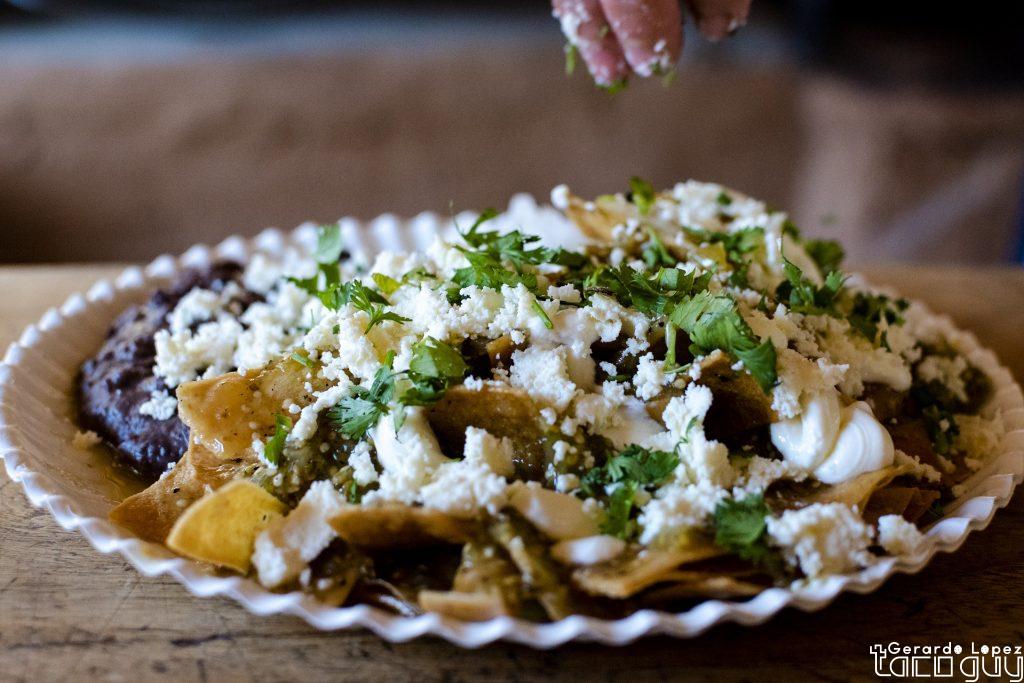
Garnishing Chilaquiles Verdes with ‘queso fresco’ on top
The origin of the word Chilaquiles is not yet fully understood, but the most accepted theory –and the one I personally describe– is traced back to the náhuatl language. Náhuatl was the language spoken by the various civilizations that inhabited the central part of Mexico, where Mexico City is located today. Amongst these civilisations, we find the Mexicas which later in history incorrectly received the name of Aztecs. But back to the word Chilaquiles, according to the scientists in Mexico, the word most likely came from the following combinations from the náhuatl:
Chi-l(-li) – that refers to ‘chile’ the main ingredient, and
Aqui-lli – with derives from the verb aquia which means ‘submerge in’
It is important to clarify that the word Chilaquiles is the plural of Chilaquil, and nowadays in Mexico, the term Chilaquil has a completely different meaning. Chilaquil in Mexico’s colloquial language means boyfriend, partner, lover, or the person under control. So there you go, a new way to refer to your significant other 🙂
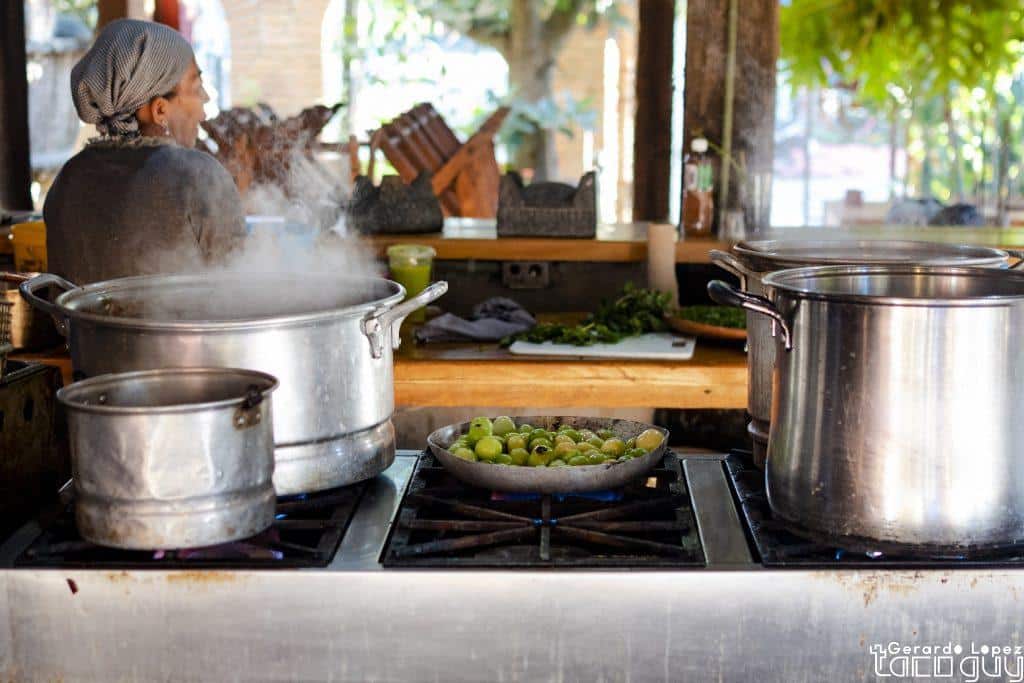
Preparing Chilaquiles
Now that we explained the origin and history of chilaquiles, its time to describe its tasty ingredients. Simply, chilaquiles are totopos –slices of fried corn tortillas– dipped in lots of salsa. And even with this simple definition, controversy will start to arise amongst Mexican people from different regions. Some regions use toasted totopos instead of fried. In other regions, they will soak the totopos in salsa until mushy whilst others will preserve the crunchiness of the totopo at all costs and will only top the chilaquiles with salsa at the very end. Then if we talk about salsa and toppings, we will have endless combinations of chillies, salsas, meats, types of cheese, and garnishes. Even the totopos sizes are different by region, but that is the subject of another blog. One thing is true about all these combinations, Mexicans are proud of them and will defend them against anyone that wants to compare them to the ‘nachos’ that were introduced in the USA many years after. Chilaquiles are the ‘real nachos’ some would rightfully say.
Chilaquiles are the ‘real nachos’
Imagining the indigenous Mexicans diet before the European arrived in America is fascinating, as their chilaquiles would be topped with deer, grilled fish, and turkey –which believe it or not, it comes originally from the lands of what today is known as Mexico and the USA-. Today, I would dare to say that the most common topping for chilaquiles is boiled & shredded chicken, Mexican crema (recipe coming soon), and grated cheese. Depending on where you are in Mexico, you will find different and exotic toppings. From vegan options like beans or hibiscus flowers to something heartier such as beef or pork carnitas. Now if you are close to the beach cities, you will find seafood chilaquiles including things like prawns, lobster, and scallops. But if you are looking for something a bit fancier, you can check out some of the modern Mexican restaurants, where you can find things like duck, or fused with Asian food.
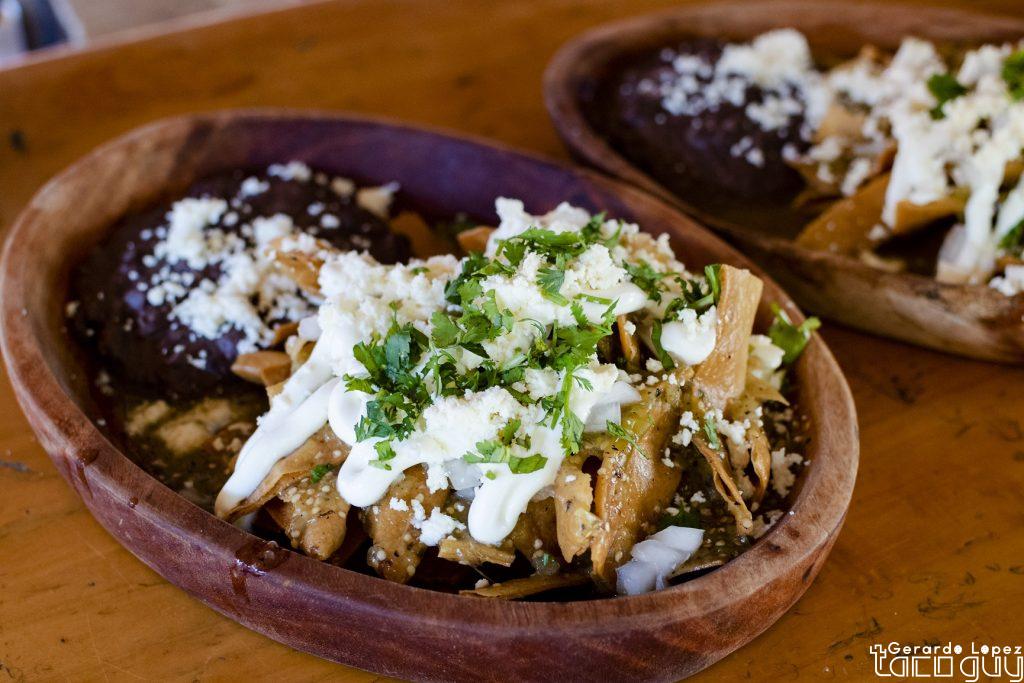
Chicken Chilaquiles from El Gallo in Nayarit, Mexico
Last but not least, let’s not forget the Chilaquiles salsa, as it is one of the pillars to the dish. There is so much pride put into salsas in Mexico, and the salsas prepared for Chilaquiles are no exception. From my trips around Mexico, I have experienced that the ‘verde’ or green salsa is the most traditional salsa for chilaquiles. The green is made with ‘tomatillos’ or green husk tomatoes, not to be confused with the field green tomatoes (recipe coming soon). However, It’s also common to find red salsa for chilaquiles with gratin cheese on top. Other salsas are sometimes used , from salsas with Tequila in Jalisco to mole in Oaxaca that makes the combinations endless. As A Mexican, I would say that if you are in Melbourne or planning to go there, you should definitely check out one of my favorite salsas in Australia, the beans salsa that Hot Lips Hacienda makes on the bayside of Melbourne.
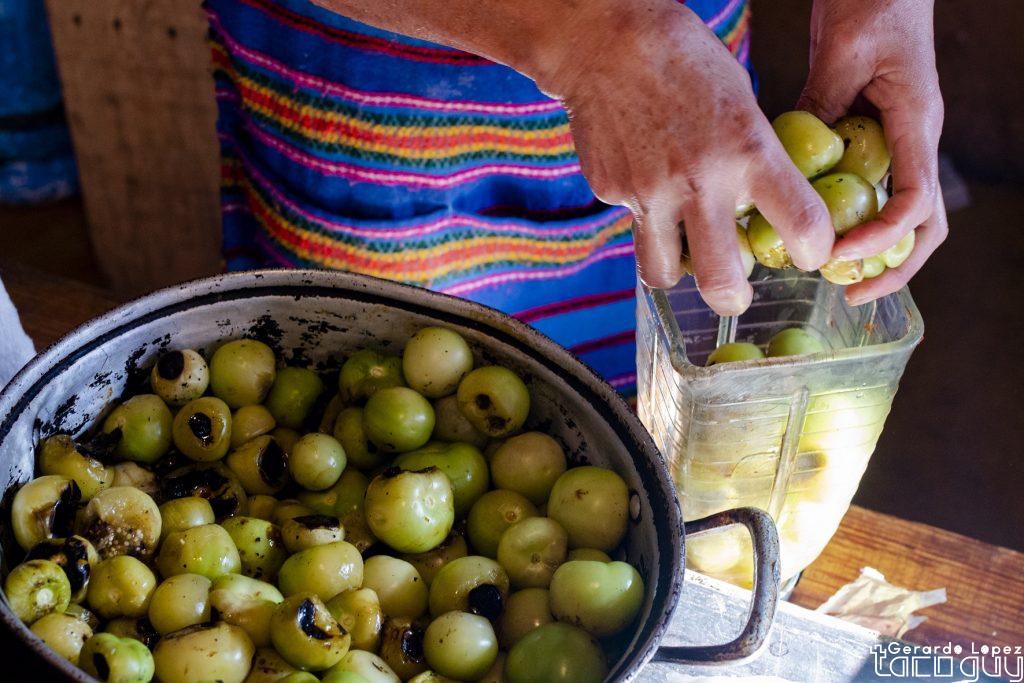
Making green tomatillo salsa (salsa verde) from the scratch
Types of Chilaquiles
And if you haven’t had enough of chilaquiles, then watch how I prepared a quick recipe with a fried egg on top during Episode 3 of my TV show: This is Mexico, where you can find heaps of interesting content and recipes!

